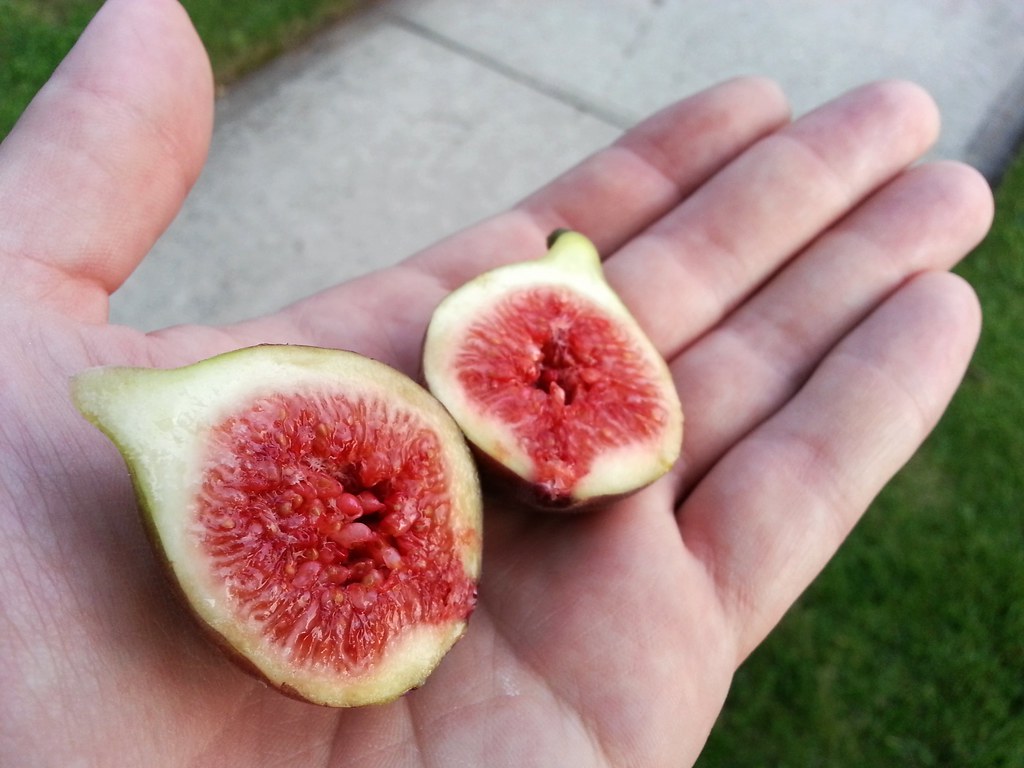
Something I never knew before I started this walk: there are approximately 500 gazillion fig trees in New York City. In some parts of the outer boroughs, I'll see a dozen or more each day. This particular fig is of the Brown Turkey variety, but you can find other types growing in the city as well.
While we think of figs as individual fruits, they're actually inside-out inflorescences — each of those fleshy little strands is actually a tiny flower! But how on earth do these flowers get pollinated? As we learned earlier, figs have an amazing relationship with a very small, specialized kind of wasp:
A female wasp of this type is able to crawl inside a fig through a tiny opening opposite the stem. Once inside, she lays her eggs, and in the process transfers pollen from the fig in which she was born. The larvae feed on the individual flowers in which they are growing until they reach maturity, at which point the males and females mate. The males then chew tunnels leading out of the fig and subsequently die, and the females (bearing pollen from the fig's flowers) escape through these tunnels and seek out new figs in which they can lay eggs of their own.Things get a bit more complicated — and interesting — with gynodioecious species (whose ranks include the figs typically grown in the US); you can learn more about them here if you are so inclined.
I should also note that the fig cultivars generally found in NYC, like the Brown Turkey, are parthenocarpic, which means they produce sterile fruit that does not require pollination — or wasps — to develop. (California's Calimyrna figs, on the other hand, must be pollinated for the fruit to mature. This has resulted in a strange-looking annual ritual in which paper bags are stapled to thousands of acres of fig trees.)



Of course, you know Matt that by the time you’ve finished walking every street in NYC you’ll be the most knowledgeable person living there… :-)